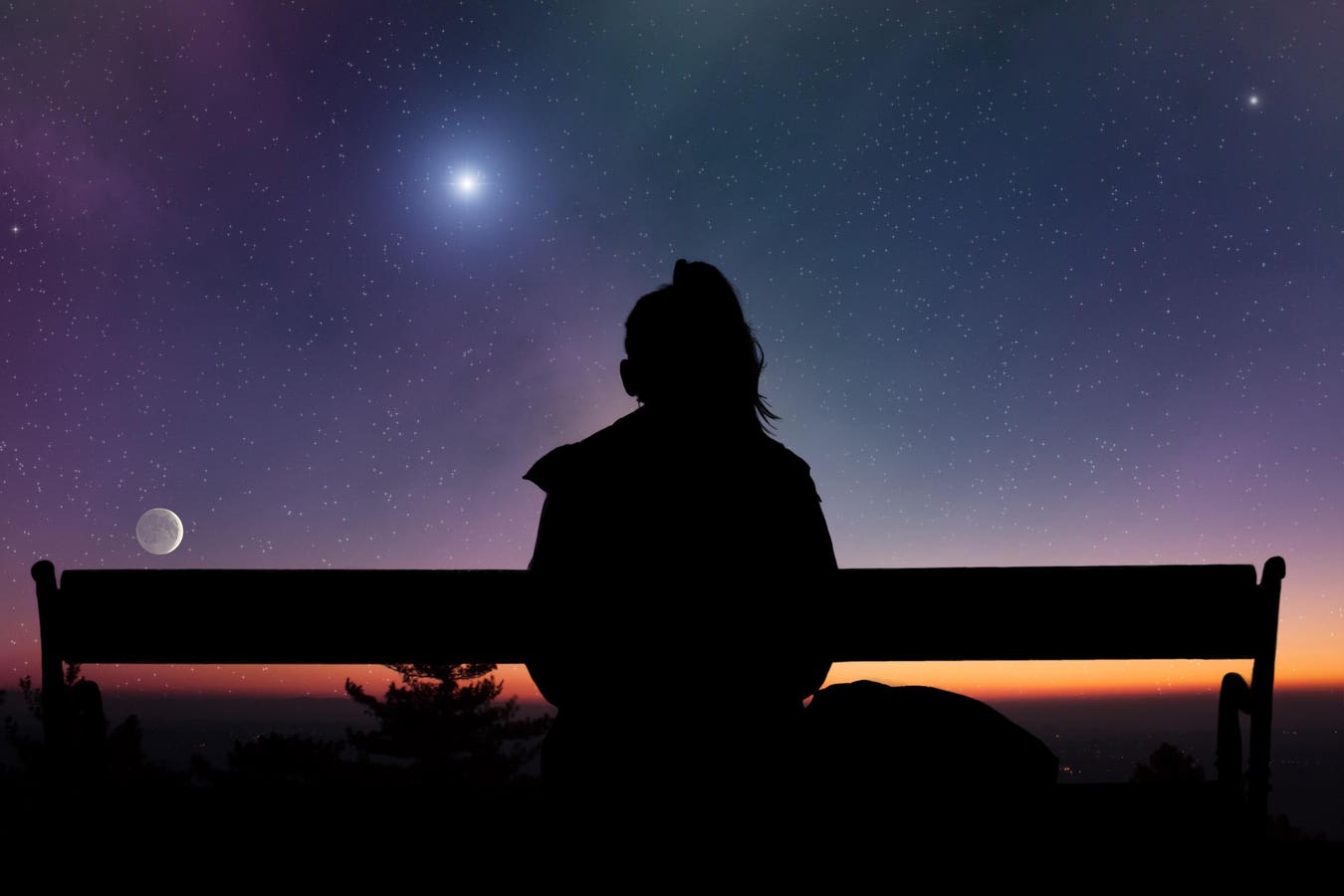Topline
Early risers are this week being treated to the sight of a “planet parade” in the eastern sky before sunrise featuring Saturn, Jupiter, Venus, Mercury and the moon. Best seen about an hour before sunrise on Sunday, Aug. 17, Saturn will be visible in the south, with the moon high above the east, accompanied by bright planets Jupiter and Venus below. Mercury could also be glimpsed below Venus in the gathering light of dawn. Uranus and Neptune will also be in the sky but not visible to the naked eye.
From Aug. 17–21, a spectacular “planet parade” (also called an alignment) will feature the moon and six planets.
getty
Key Facts
About an hour before sunrise, a 36%-lit waning crescent moon will shine high above Jupiter and Venus in the eastern sky. Mercury will hug the eastern horizon and be easier to spot closer to sunrise, though it’s on the cusp of reaching its farthest position from the sun from Earth’s point of view.
Jupiter will be the highest of the visible planets, while Venus will blaze brightest between Jupiter and Mercury.
Saturn will be visible in the southern sky. The ringed planet is currently brightening as it nears its annual bright “opposition” on Sept. 21, when Earth will be between Saturn and the sun.
The highlight of this week’s “planet parade” will arguably come on Wednesday, Aug. 20, when a slender crescent moon will shine very close to a brilliant Venus.
The next “planet parade” isn’t until October 2028, when five planets will be visible together before sunrise.
Sunday, August 17: A ‘Planet Parade’
Stellarium
Jupiter Rising
Jupiter, the largest planet in the solar system, is hard to miss in this morning’s sky. It will spend the rest of the year rising higher into the morning sky and won’t come to a bright opposition this year. It’s an occasional consequence of its 13-year orbit around the sun. Jupiter will next be at its biggest, brightest and best on Jan. 10, 2026. Through binoculars or a telescope, you can glimpse some of its largest moons — Io, Europa, Ganymede, and Callisto — lined up like tiny stars.
What’s Next In The ‘planet Parade’
The “planet parade” will look much the same on Monday, Aug. 18, when a slimmer 26% crescent moon will glow near Venus and Jupiter. On Tuesday, Aug. 19, Mercury will be at its highest in the morning sky as the moon wanes to 16%-lit and forms a curve with Venus and Jupiter. On Wednesday, Aug. 20, a 9%-lit crescent moon will appear very close to Venus, with Mercury below and Jupiter above in what is perhaps the highlight of the week-long event. Come Thursday, Aug. 21, the slender 4%-lit waning crescent moon will be beneath Jupiter and Venus, close to Mercury.
What’s Next In The Night Sky
With the “planet parade” over on Aug. 22 as Mercury sinks, Saturn and Jupiter will gradually brighten as Venus begins to fade. Before sunrise on Aug. 31, Venus will be positioned within the Beehive Cluster, a dense cluster of stars that looks great through binoculars.
Further Reading








